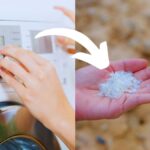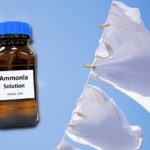The number of laundry products on the market can be overwhelming. From powdered detergents to washing pods, fabric softeners, stain removers, and colour catchers, there are many products to wrap our heads around.
Today, we’re focusing on one lesser-known laundry product: laundry bluing.
Laundry bluing – also known as dolly blue or washing blue – is a classic laundry secret.
Before you start picturing a nightmare laundry day where all your clothes turn blue, let’s get the lowdown on what laundry bluing really is and why it’s been a laundry room staple for generations.
Plus, we’ll tell you where you can buy this brilliant washing product in the UK.
What Is Laundry Bluing?
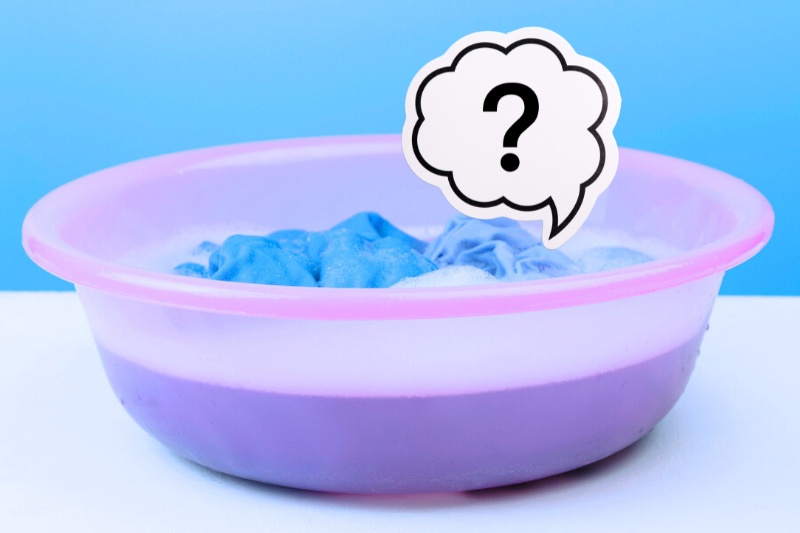
Laundry bluing is a colloidal suspension of a very fine blue dye known as Prussian blue and water.
It’s traditionally used to enhance the whiteness of fabrics and counteract the yellowing or greyish tinge that can develop over time in light-coloured clothing.
In fact, it’s one of the best ways to whiten clothes that have turned yellow, helping them look crisp and fresh.
Laundry bluing is successful at restoring the brightness of your whites by adding a faint blue tint to the fabric.
This creates the optical illusion of whiteness by offsetting the yellowish tones—the two colours are on the opposite side of the colour wheel and cancel each other out.
It works in a similar way to purple shampoo, which is used to eliminate brassy tones in blonde hair.
Therefore, bluing is not a cleaning agent and won’t make your clothes any cleaner or fresher. Rather, it’s a whitening and brightening agent and can restore the crisp whiteness to your garments that have dulled over time.
How to Use Bluing to Whiten Clothes
Using laundry bluing is simple: dilute the dye and add it to your rinse cycle. However, adding too much or overusing laundry bluing can cause damage or colour alteration.
For best results, follow the step-by-step instructions below:
Step 1: Fabric compatibility check

Before you dive into bluing, give your clothes’ care labels a quick once-over. You want to ensure laundry bluing is safe for the fabric type, or you could cause irreversible damage to your garments.
Top Tip: Delicate fabrics are typically unsuitable for bluing, so check out these alternative laundry whiteners to brighten whites instead.
Step 2: Dilute the laundry bluing
Most laundry bluing products come in concentrated liquid form. Therefore, you’ll need to dilute the bluing solution in cold water before adding it to your laundry to water down the dye.
This prevents it from permanently dying your clothes blue and helps you achieve the desired whitening effect.
Always follow the manufacturer’s instructions for the proper dilution ratio. As a guideline, we recommend using ¼ teaspoon of bluing to 1 litre of water for brightening whites.
Stir the mixture to ensure the iron blue pigment is well distributed for even results.
Step 3: Add the bluing to your whites

It’s now time to add the bluing to your whites. For clothes that need hand-washing, add the diluted bluing solution to the final rinse water and agitate it well before adding your clothes.
If you’re washing your clothes in a washing machine, add the diluted bluing to the rinse cycle.
Afterwards, give your clothes a short soak in the bluing solution. Soak anywhere from a few minutes to around half an hour, depending on how vibrant you want them.
Keep an eye out, though—you’re aiming for bright, not blue! If using a washing machine, we recommend choosing a setting with a shorter rinse cycle to avoid over-bluing.
Step 4: Rinse & dry your whites
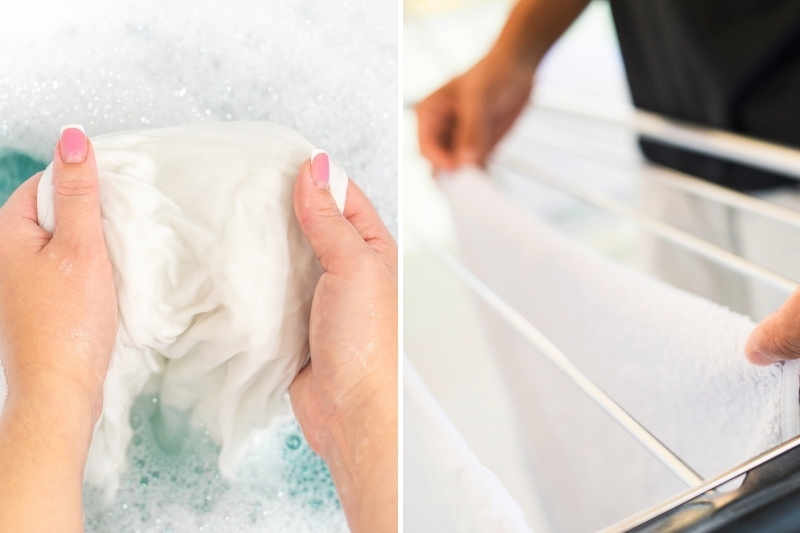
Once you’ve achieved your desired level of brightening, rinse your clothes thoroughly in cold water until the water runs clear. This ensures that any excess bluing is removed.
If using a washing machine, choose a setting with a second rinse cycle—the bluing is added to the first, and then the excess is rinsed away in the second.
After rinsing, you can proceed with drying your clothes as usual. Either hang them on an airer or toss them in the tumble dryer. Once dry, your whites should look as bright as when you bought them.
Where Do You Put Bluing in the Washing Machine?
Where you put laundry bluing in the washing machine depends on the type of washer you have:
- Top toaders: If using a top loader washing machine, pour the diluted litre of bluing directly into the machine drum once the wash cycle has finished. Be careful not to pour concentrated bluing directly onto your clothes, as this can cause uneven distribution and potential staining.
- Front loaders: For front-loading machines, add as much diluted bluing to the dispenser drawer as possible after your washer has filled with water. This ensures that the blueing is released during the rinse cycle rather than the wash cycle.
Some front-loading washers lock their dispenser drawer during the cycle. If this is the case, you’ll have to add the bluing to the dispenser before the cycle begins.
It will be dispensed during the wash cycle rather than the rinse cycle. This isn’t optimal but should still produce effective results.
How Do You Get Laundry Bluing Out of Clothes?

It’s important to note that while laundry bluing can effectively enhance the whiteness of clothes, it’s a temporary solution and may need to be reapplied periodically.
However, if you overuse bluing or use it on delicate fabrics, you might end up with more blue than you bargained for!
Fortunately, laundry bluing can be removed from your whites if you’ve been a little heavy-handed. Here are a few solutions you can try at home:
- Vinegar solution: Mix equal parts of water and white vinegar, then soak the blued garment in the solution for about 15 to 30 minutes. After soaking, gently rub the fabric to help release the bluing and rinse thoroughly with cold water.
- Lemon juice: Lemon juice is a natural bleaching agent that can help remove laundry stains. Squeeze fresh lemon juice onto the stained area, then let it sit in the sun for a few hours (the sunlight can enhance the bleaching effect). Rinse the fabric thoroughly afterwards.
- Bicarbonate of soda: Create a cleaning paste using bicarbonate of soda (also known as baking soda) and water, then gently rub it onto the blued area. Allow it to sit for about 15 minutes before rinsing with cold water.
- Hydrogen peroxide: Hydrogen peroxide can act as a mild bleaching agent. Mix a solution of equal parts water and hydrogen peroxide, then soak the blued fabric in this solution for about 15 to 30 minutes. Rinse thoroughly after soaking to remove excess peroxide.
- Colour removers: Commercial colour removers are available that may help fade the bluing. Follow the instructions on the product carefully and conduct a patch test on an inconspicuous area before treating the entire garment.
- Washing machine: If the bluing is not very strong, you can try washing the garment in a washing machine with a good detergent and an extra rinse cycle. This will help dilute and remove the bluing. Repeat a few times if needed.
Always test any method on a small, inconspicuous area of the garment before treating the entire stained area.
Also, be patient and gentle while attempting to remove bluing, as aggressive rubbing or harsh chemicals can damage the fabric.
If the bluing is particularly stubborn, it may be best to consult a professional cleaner for advice.
Other Tips for Using Laundry Bluing
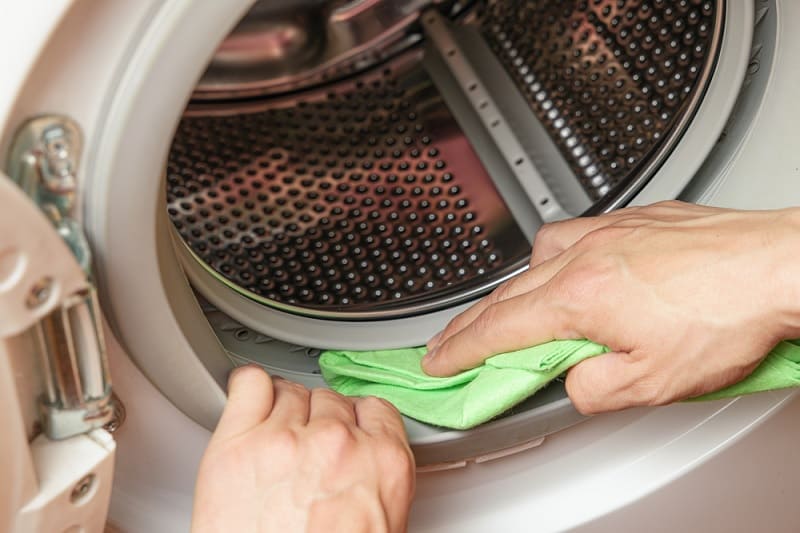
- Don’t use on delicates and synthetics – Bluing is not recommended for use on delicate or synthetic fabrics. Always check your garments’ care labels before using laundry bluing.
- Follow dilution instructions – Bluing should always be diluted according to the instructions. Adding too much can lead to over-bluing, uneven results, and unsightly streaks.
- Don’t apply too much – Don’t pour concentrated laundry bluing directly onto fabrics, as it can cause spotting. Ensure the bluing is thoroughly mixed with water before adding it to the laundry load.
- Don’t use too much – Using too much laundry bluing can lead to an unwanted bluish tint on fabrics. Start with a small, more dilute amount and adjust as needed.
- Clean your washing machine after use – Regularly clean your washing machine after using bluing to prevent residual buildup. If left, this can transfer to other clothes and cause unwanted colour changes.
- Don’t mix with bleach or fabric softener – Bluing can be used with laundry detergent but should not be mixed with chlorine bleach, fabric softener, or any other laundry products.
Can Laundry Bluing Be Used with Coloured Clothes?
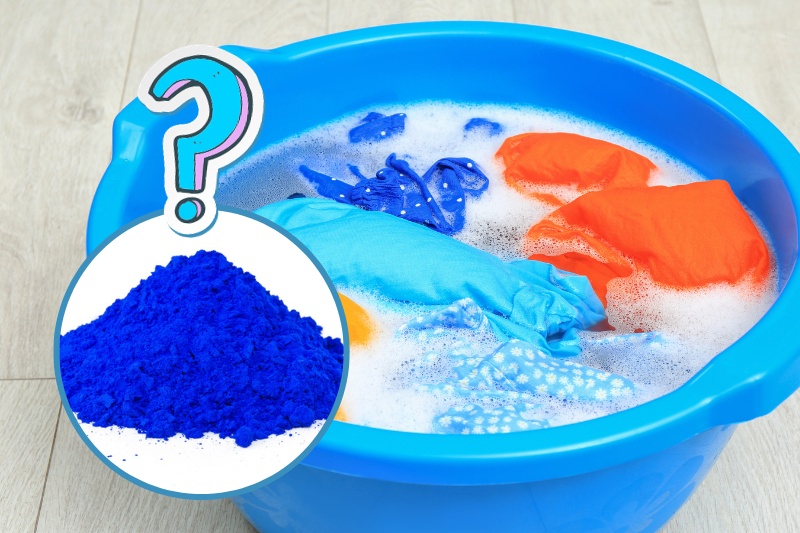
Laundry bluing is traditionally used to brighten whites. However, many homeowners have started using bluing on coloured clothes—for example, to darken blue denim jeans.
You can use bluing this way, but you will need to use a higher concentration to achieve the desired result.
Many people recommend up to 1 teaspoon per litre (depending on how dark you want your jeans), which is four times the concentration used for brightening whites.
This brings us to the first of several reasons why we advise against using bluing on coloured clothes:
- Stains containers: In high concentrations needed for dyeing clothes, laundry bluing will stain containers permanently, which is certainly something to consider.
- Not intended as a dye: Bluing is not designed to be a dye and could lead to unintended colour changes or uneven results, ruining your coloured garments.
- Unpredictable results: Coloured garments already contain dyes, and it can be difficult to predict how the bluing will interact with these pigments and the fabric.
If you want to enhance the appearance of your coloured clothes, it’s better to explore other options, such as using a colour-safe laundry brightening product.
Or, if you’re interested in dyeing jeans, we recommend using a fabric dye product designed explicitly for denim.
Where to Buy Laundry Bluing in the UK
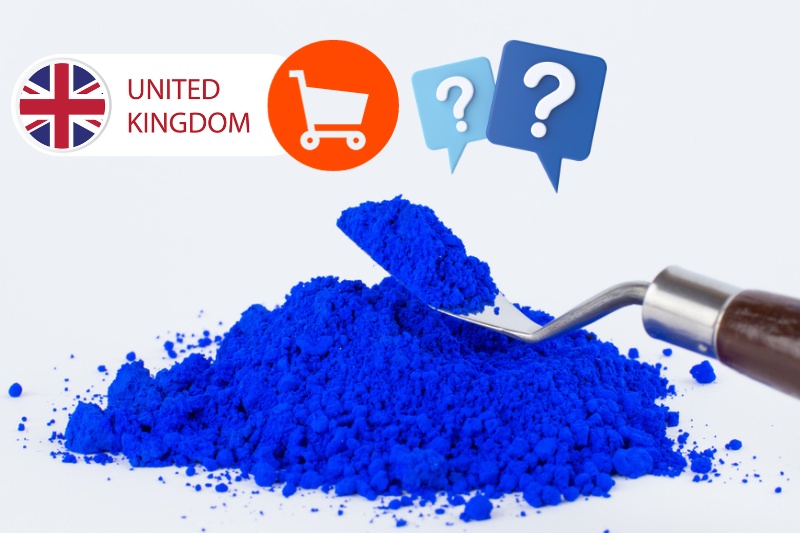
In the United Kingdom, you’ll be hard-pressed to find laundry bluing on supermarket shelves.
Online marketplaces like Amazon are the best place to buy bluing. Some well-known brands available on Amazon include Mrs Stewart’s Bluing and Reckitt’s Crown Blue (tablet rather than liquid form).
When purchasing bluing, be sure to read the product description and reviews to ensure you’re getting a reputable and effective product.

Hannah has a passion for cleaning. She worked her way around Australia by cleaning hostels in exchange for free accommodation and used her cleaning skills to bag a job as a chalet host for a luxury ski company in France.



